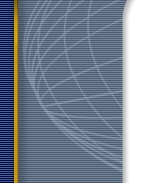


|
Six Days Creation
By God’s Creation we mean the act of God
calling into existence that which previously had no existence.
Creation out of nothing involves three areas:
From "God’s creation" all things in heaven and earth were fashioned. GENESIS Genesis means "first, in place, time, order or rank". It carries the idea of beginning or origin. In the book of Genesis we find the beginning of:: Creation - Genesis 1:1. Revelation - Luke 24:27 Marriage –– Matthew 19:4,5 The Family - Genesis 1:28 Temptation and Sin – 1st Timothy 2:13, 14. - Genesis 2:16, 17; 4:5 God’s Plan of Redemption - Genesis 3:15, 21 Civilization – Genesis 4:17, 20, 21, 22. God’s Table of Nations After the Flood – See Genesis 10. There are five different groups who kept the record of their genealogy from Japheth. The Bible gives the genealogy from Shem to Jesus Christ. God’s Covenant With Abraham - See Genesis 12:1-3 The Beginning of the Nation of Israel - Genesis 32:28; 49:28 Moses was the human author of Genesis and the next four books of our Bible. Jesus, the Son of God affirmed that Moses wrote these books by the revelation and inspiration of God. See Matthew 5:17, 18; 7:12; 11:13; 22:37-40; Luke 16:16, 17; 24:27, 44; John 7:23. The Six Days of Creation The Bible record strongly supports the belief that there were six literal days involved in bringing all that is in the universe into its present form. 1). The Hebrew word for day is "yom". It is true that yom can be used in a figurative sense to mean a period of time. However, yom is translated 1200 times to mean one literal day and only 65 times with the meaning "time." The plural form, "yomim" is translated "days" 700 times.
The First Day – Light. Verses 1:3-5 The literal language of the Hebrew is dramatic. "God cried, ‘LIGHT BE!" "LIGHT WAS." Light filled the universe with warmth and illumination. Verse 4 & 5 indicate the earth was placed on a rotational basis which resulted in one side of the earth being illumined by the sun while the side away from the sun would experience darkness. The Second Day – The Atmosphere. 1:6-8. The Hebrew word "rakia" means "a spreading out" and refers to the various layers of the atmosphere being "spread out" to provide the earth with a beautiful blue canopy. The atmosphere provides the right mixture of nitrogen, oxygen, and the other gasses to make human life possible on earth. With billions of humans and animals constantly using up the oxygen in the atmosphere how does the atmosphere provide the right balance to sustain life? God provided for the oxygen to be replaced by plant life. Man and animals inhale air and exhale carbon dioxide. Plants inhale carbon dioxide and exhale oxygen. The atmosphere is also a canopy of comfort for the earth. Without it the side of the earth toward the sun would be turned into a burning oven and the side away from the sun into a deep freeze. It also enables birds, insects and airplanes to fly; sounds to travel and weather to be formed. As originally created there was also a layer of vapor canopy or "hydrosphere" above the atmosphere. This was "broken up" (Genesis 7:1) in the days of Noah to contribute to the great flood. This may sound far-fetched until evidence is considered that reveal that the north and south poles were at one time covered with lush vegetation that came to a sudden end: 1. Frozen tropical plants have been found in Siberia with identifiable chlorophyll.
The effect of a vapor canopy or hydrosphere would be to turn the earth and its atmosphere into a giant terrarium (a glass enclosure of plants). 1) There would be no rain before the flood because there would be no significant air mass circulation. (See Genesis 2:5,6). 2) The entire earth would have a tropical climate. And, 3) People lived longer because the vapor canopy filtered out many more harmful rays from the sun that cause mutations and rapid aging. The scriptures tell us that earliest man often lived over 900 years. The Third Day - Seas, Dry Land and Plant life. 1:9-13 God’s work of creation on the third day is described as taking place in three stages:
The Seas. At present the earth is unique in possessing seas. Multiplied billions have been spent on space exploration with the chief goal of finding out if other planets have seas or had them at one time. Why? 1). Without seas there can be no life. The earth was created as a habitation for man and those creatures and plants that serve the needs of man. Water covers three-fourths of the earth’s surface. The seas, lakes, and rivers obviously sustain the life of fish, mammals etc., that live in the sea. The seas also evaporate and form clouds. The clouds bring rain on the earth and make possible the growing of crops and the replenishing of man’s water supply. The Dry Land Covered With Plant Life. The first form of life on land was plant life. In this age of science it is interesting to consider that scientists can reproduce any seed made with the same components of the seeds that grow. Yet, when the scientist’s seed is placed in the ground it turns to dust. Other qualities about life that scientists cannot reproduce are: The power of reproduction The mystery of growth The power of plant life to change soil into plant life: the power of animal life to eat the plant and change plant life into animal life and the power of humans to eat plant life and animal life and change both into human life. The chief function of plant life was to provide food for man and animals (Genesis 1:29, 30; Psalms 104:14). God provided a great variety of plants to meet the needs of a great variety of creatures that inhabit the earth. God provided the mysterious power to reproduce by multiplication so that a growing population could have its needs met. Plants make an invaluable contribution to the environment. They: Restore oxygen to the atmosphere Provide a protective covering to the soil against erosion Provide shelter for animals and birds Provide lumber for the housing of mankind Beautify the landscape and influence the climate. The Fourth Day -. Lights in the Heavens 1:14 – 19 "And God said, ‘Let there be lights in the expanse of the skies…"’ NIV "And God made the two great lights; the greater light to govern the day, and the lesser light to govern the night; He made the stars also." 1:14, 16. Here, God brings the sun, moon, stars, planets, etc into their fully developed purposes. For lights in the heavens (verse 14a) To divide the day from the night (14b) To be for signs, (14c) [See Luke 21:25] To be for seasons, days, and years (14d) Seasons – The rotation of the earth on its axis coupled with the earth’s rotation around the sun creates the four seasons of the year. For Days and Years. It takes the earth 365 ¼ days to make a complete trip around the sun making one year. It takes the moon 29 ½ days to go through its cycle of quarter, half, three-quarters and full moon. It served as a calendar of time for Israel and other nations. "God made the stars also" The heavenly bodies were put into perpetual motion with each moving through space faster than a missile yet seemingly in splendid isolation. The Fifth Day – Creatures of the Sea and Air (1:20 – 23) The creation of creatures of the sea and air begins a form of life superior to plant life. This marks the beginning of self-conscious life. The Sixth Day – Land Animals and Man (1:24 – 31) Land animals are classified as: Cattle – large, grass eating, four footed animals Creeping Things – Reptiles, insects, worms, etc. Beasts of the Earth – Those animals that became wild, flesh-eating animals after the fall of man. God decreed that these creatures would bring forth "after his kind." In all observable experience this has remained true. There remain "missing links" between every "kind" of God’s creation. Man Formed from the dust of the earth, man’s body is composed of the same 18 elements as the crust of the earth. Yet, when this body is yielded to God it becomes an agent of service for God (Romans 12:1,2) and the temple of the Holy Spirit (1st Corinthians 6:19). "And God created man in His own image…" Some have suggested this means that man has a three-fold nature of body, soul, and spirit. Others have suggested the following meanings: Man was created a spiritual and moral being with the capability of fellowship with God. Man was created with the powers of intellect, will, and emotion. This enables man to think, reason, dream, envision, and experience emotional feelings. It also enables man to have self determination. Outside influences may affect man’s decisions. Heredity may affect man’s inclinations and propensities. Yet, nothing rules over man’s will. Man is capable of and responsible for his own decisions. Man is a social creature. God said, "It is not good that man should live alone." This not only refers to a man’s need for a mate, but also his social need for others. Man was authorized to rule over the rest of God’s creation. Adam did have dominion over God’s creation until he sinned. When the scepter of dominion fell from Adam’s hand it was picked up by the fallen angel, Lucifer, who became Satan. With that scepter in his hand he is "the god of this world (2nd Corinthians 4:4). However, through the sacrificial redemption of Christ, man has the opportunity of being restored to dominion over all things. (See Hebrews 2:5-15). Copyright © 2002 Thomas E Berry
Copyright © 2008 Truth Helpers Inc.
|
|
|
|

